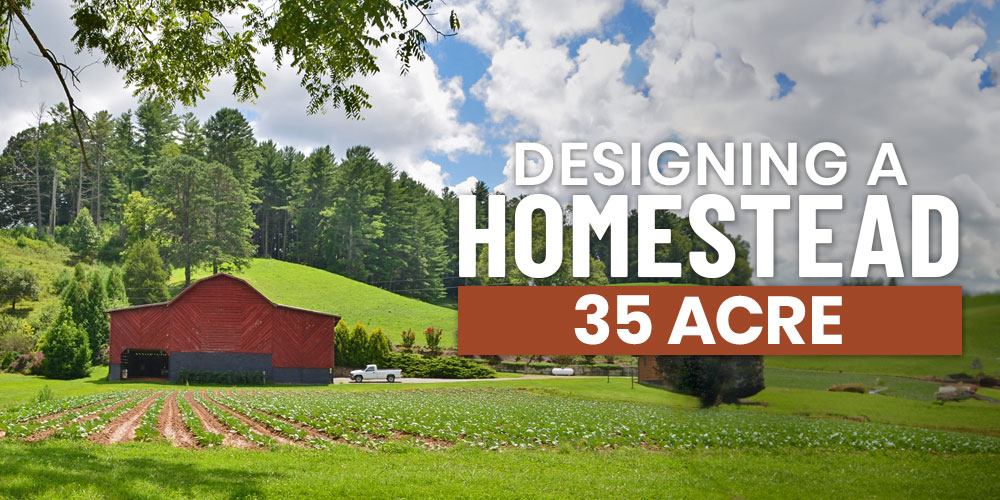
NAVIGATION

Hi, I’m Ryan
My experience working large farms led me to create a 35 acre homestead layout with the capacity to raise livestock and grow gardens in a protected, efficient, and orderly environment. I’ve found that by elevating health and safety, I can enjoy successful longevity and increase production on my homestead, and you can use this layout to do the same, whether you’re just starting out with a vacant 35 acre plot, or you’re looking to revamp your current design.

When I designed a homestead on my own land, I realized in order to ensure long-term success, I needed to carefully consider the potential hazards to the health and abundance of my crops and livestock and plan accordingly. So, I took my successes and worked them into the design of this 35 acre homestead layout to prioritize the continued well-being of my farm and yours. Predators like raccoons, hawks, foxes, snakes, and opossums will try to snatch your poultry (or at least their eggs), and smaller pests, in the form of beetles, locusts, and slugs, can harm and even kill large portions of your plants and trees. Fortunately, doing some advance planning will prepare you to minimize these threats to your homestead and keep it thriving.
35 Acre Homestead Layout

A 35 acre homestead layout is a wonderfully roomy piece of property with enough space to expand your farming ventures to large livestock and bulk amounts of produce. When you’re looking at this amount of land, though, there’s significant potential for harmful varmints to hamper your efforts.
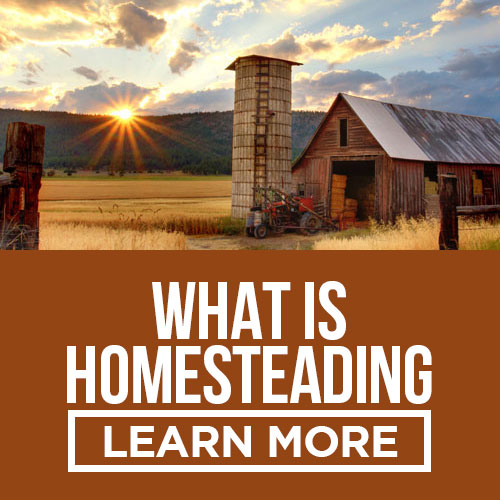 This homestead design includes a sturdy fence around your farm’s perimeter, and strong, durable pens and coops to keep your livestock protected. Along with this detailed diagram, I’ll let you in on some tips for keeping your homestead safe and healthy by growing specific plants that deter pests, and even share tips for using large livestock to scare away bigger predators.
This homestead design includes a sturdy fence around your farm’s perimeter, and strong, durable pens and coops to keep your livestock protected. Along with this detailed diagram, I’ll let you in on some tips for keeping your homestead safe and healthy by growing specific plants that deter pests, and even share tips for using large livestock to scare away bigger predators.
In this layout diagram for your 35 acres, I’ve allowed space for around 90 4×8 raised garden beds, 40 10×10 ground-level gardens, and approximately 215 fruit trees. For your livestock, I recommend close to 180 chickens, 150 ducks, 125 goats, 95 pigs, 45 beehives, and seven cows. We’ll get into the best ways to keep your gardens and livestock protected below.
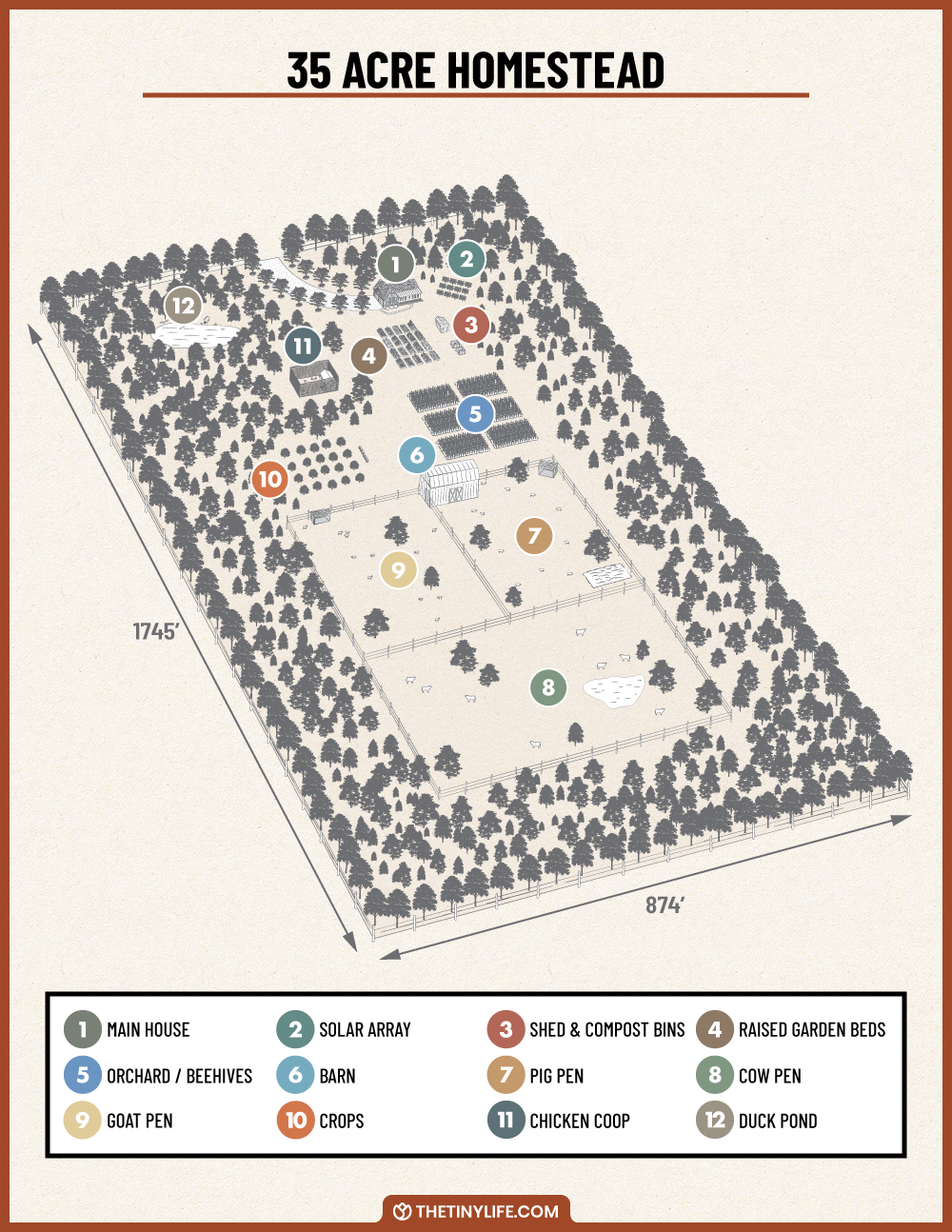
Designing Your Homestead Layout
How Much Will A 35 Acre Homestead Produce?
A 35 acre homestead layout has the potential of producing around 110,000 lbs of food if you’re farming most of your land and continually looking after the health and well-being of your plants and livestock, and if the weather helps you achieve optimal harvests. Here is a breakdown of what to expect from each category of your homestead.
Production Projections For 35 Acres
- Main HouseHaving a home that meets your needs while supporting the overall purpose of your homestead will look a little different for everyone. I always recommend designing your kitchen to be a pleasant place to prepare your homegrown food and having a garage or large pantry for storing your preserved produce. An attached sunroom for growing indoor herbs that your family and your poultry can eat is a bonus.
- Solar ArrayIf you’re aiming for a sustainable homestead, solar power is the way to go. Sixty solar panels can power around 6,000 square feet of living and working space.
- Shed & Compost BinsMany homesteaders shooting for having a self-sustaining farm choose wood heat for the colder months, and if you’re one of them, having a woodshed will be necessary for protecting your firewood from inclement weather. Depending on how cold your winters get, one cord of wood (which takes up around 128 cubic feet) could heat between 300 and 500 square feet of living space. The size and output of your compost bins will depend on the amount you produce through your garden and table scraps, so you can start small and build to the number of bins you need, and you can always experiment with different types of composting, like vermicomposting.
- Raised GardensRaised beds are easier to protect and keep healthy than larger garden spaces, and if you build 90 of them at 4×8 feet, you could bring in a yearly harvest anywhere between 2,880 and 5,760 lbs.
- Orchard / BeehivesYour orchard can benefit from your beehives, as your bees will love pollinating your fruit tree blossoms before producing honey and beeswax. Your 215 trees could produce between 32,000 and 64,000 lbs of fruit in a year, with 45 beehives producing around 3,600 lbs of honey.
- BarnThe larger your homestead, the larger your barn will need to be in order for your equipment, tools, hay, feed, and other homesteading needs to be safely stored inside.
- Pig PenNinety-five pigs that each weigh 250 lbs will give you about 11,500 lbs of meat, so your yearly pork production will depend on how many of your pigs you slaughter and how many you keep for breeding.
- Cow PenLactating cows can produce 2,000 gallons of milk in the 10-month period after giving birth, so the amount of milk you bring in will depend on how many cows you’re breeding. If you’re using your cows for meat, a 1,200-pounder will yield close to 500 lbs of meat, so, with seven cows, if you breed four and slaughter three, you’ll be looking at around 8,000 gallons of milk and 1,500 lbs of beef.
- Goat PenOne hundred and twenty-five lactating goats could produce around 25,000 gallons of milk a year. That said, you will most likely have some male goats in the mix and some females who aren’t lactating.
- CropsForty ground-level gardens at 10×10 feet each will give you 4,000 square feet of growing room that could yield around 4,000 to 8,000 lbs of produce in a year.
- Chicken CoopIf you’re raising 180 of the right chicken breeds, you could potentially collect around 4,500 cartons of eggs in a year. Since most people consume around 23 cartons of eggs annually, that’s enough eggs for almost 200 people, giving you an excess supply to sell or trade.
- Duck PondDucks generally lay more eggs than chickens, so 150 ducks could also produce around 4,500 cartons of extra-large, extra-flavorful eggs a year.

Why 35 Acres Is The Perfect Size For Your Homestead

Thirty-five acres is the perfect size for your homestead if you take pride in being a caretaker of your land, animals, and all things growing on your property. The layout design I’ve provided will give you ideal places for your vegetable gardens, poultry coops, and animal pens and pastures. Plan ahead by using sturdy materials, healthy feeds, and natural bug repellants to keep your homestead, harvests, and soil health in good shape for the long term.
Is 35 Acres Enough For A Farm?
If you’re working with a homestead layout for 35 acres, you have plenty of room for a farm where you can grow your own food in abundance. If your goal is to be self-sufficient, you’ll be able to achieve that even without farming all of your land, which would give you property leftover for larger outdoor hobbies or rotating crop fields.
What Are The Dimensions Of 35 Acres?
Laying out your homestead might seem overwhelming when you’re working with 1,524,600 square feet at approximately 874 by 1,745 feet. Thankfully, following a tried-and-true preset design like this 35 acre homestead layout can make the process more straightforward.
How Do You Lay Out A 35 Acre Homestead?

If you compare a map of your land with my diagram, you’ll be able to get a good picture in your head of how closely you can follow my specifications. If your property is heavily wooded, hilly, or has a pre-existing pond, alter this blueprint to fit your needs. After drawing out a rough sketch of your modifications, you can use stakes and/or string to act as placeholders until you start building or planting. Keep your own safety and the well-being of your livestock and plants in the forefront of your mind as you choose building materials and invest in predator deterrents.
Here’s What I’ve Done
- A solar generator to ensure my solar-powered tiny home doesn’t lose power
- A sunroom to keep my herbs safe while still thriving in the sun
- A lockable, wooden chicken coop for protection and a heat lamp for warmth
- Cloth-covered ventilation in my chicken coop for healthy air
- An enclosed chicken run made from welded wire fencing for optimal protection
- A long driveway lined with trees
- Multiple compost bins to aid in fertilizing my garden
- Apple and pear trees so I have fruit for baking
- Lots of maple, oak, and dogwood trees for shade and privacy
- A covered bin of natural pest repellant sprays right next to my garden beds
- Raised garden beds (4×8 feet), each made easily from three 2x4s
How Big Should A Homestead Garden Be?
If you are including all of the elements I’ve suggested in my 35 acre homestead layout, your garden should be under 8,000 square feet. This growing space will include your ground-level and raised bed plots. A great way to protect the vegetables, melons, and other plants you give a lot of your time and energy to cultivating is to plant certain flowers and other plants around and among your vegetables to scare off bugs. Garden pests hate pungent plants like basil, mint, lavender, chives, lemongrass, and even marigolds, but planting these is a win-win for you.
How Many Fruit Trees Should You Plant On 35 Acres?
If you’re going with seven cows and therefore setting aside close to 14 acres for your cattle, you’ll probably need to keep your orchard to between 200 and 230 trees. This amount of fruit trees will give you an average harvest of around 50,000 lbs, which is enough fruit to feed over 400 people for a year. To protect your fruit from moths, beetles, slugs, birds, and fruit flies, you can use a variety of methods, like the following.
Methods For Protecting Your Fruit From Pests
- Placing a copper band around the base of your tree trunks
- Hanging sticky traps from your tree limbs
- Using exclusion netting
- Keeping your tree branches trimmed
- Make sure the ground around your trees is clear
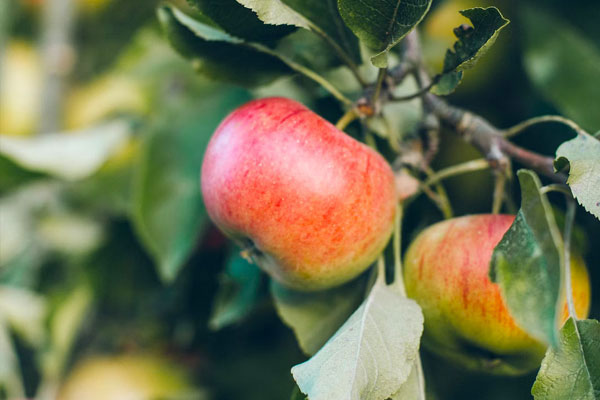
How Many Berry Bushes Should You Plant On 35 Acres?
If you want to grow berries instead of fruit trees, you could plant around 300 to 400 bushes on 35 acres. On the other hand, if you’re wanting to plant a few berry bushes in addition to your orchard, you could plant as many as can easily fit along your fence. The best natural way to protect your bushes from bugs is through companion planting — growing bug-repellant plants like marigolds, mint, lavender, and strong-smelling herbs in close proximity to your bushes.
Fencing Your 35 Acres
A homestead fence is one of the most important methods of protecting your plant and animal life from outside predators, so choosing the right materials is a big deal. If you’re able to do steel posts with metal wiring, your fence will last longer and require little maintenance over time. Thirty-five acres is a lot of property to fence, though, so if you go with wood (the cheaper option), I’d recommend using cedar. Whichever materials you choose, remember that the types of livestock this layout recommends will require a fence that functions as a keep-in and a keep-out barrier.
What Animals Can You Have On A 35 Acre Hobby Farm?

A 35 acre homestead layout provides plenty of room for multiple types of livestock, namely chickens, ducks, bees, pigs, goats, and cows. This variety will give you all the meat, milk, eggs, honey, fruit, and vegetables you could ask for.
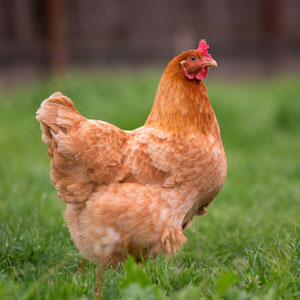
Start Your Homestead With Chickens
Chickens help to decrease the bug population on your property that like to feed on your garden plants and fruit trees. If you use a chicken tractor, they can also help to till and fertilize your soil while laying enough eggs to keep you well supplied.

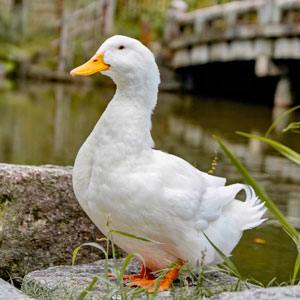
Ducks Are Also Natural Pest Controllers
Ducks also like to forage, which means they will gobble up a lot of the critters trying to feast on your plants. Along with being little pest controllers, ducks also lay lots of eggs that are actually larger and more flavorful than chicken eggs. Since it’s not as common to raise ducks, these larger eggs are often something of a delicacy that can fetch a higher price at farmers markets.
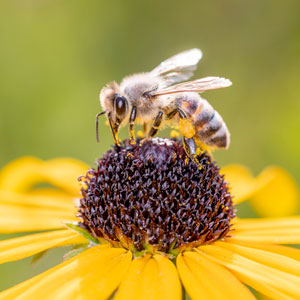
Bees Are Integral To The Growth Of Your Fruits And Flowers
Bee keeping probably isn’t the first thing that comes to mind when you think of homesteading, but bees will pollinate your fruit trees, your berry bushes, your flowers, and even some of your vegetables. On top of this, they’ll produce honey and beeswax for you to use, gift, and sell. In spite of their many and varied benefits for your farm, bees (more specifically their honey) are a strong draw for bears, so you’ll want a precaution in place like an electric fence.
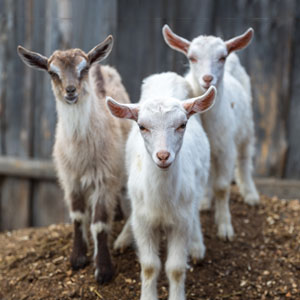
Goats Clear Your Invasive Weeds
Goats are charming, fun-loving animals that will give you lots of milk while eating up the weeds that could otherwise threaten to take over. However, animals that are higher up the food chain, like bobcats, mountain lions, coyotes, and other large predators, love to snag goats, so if you’re in an area with any of these wild animals, you’ll need to protect your herd with deterrents like an electric fence or a timed noise or flashing light device.

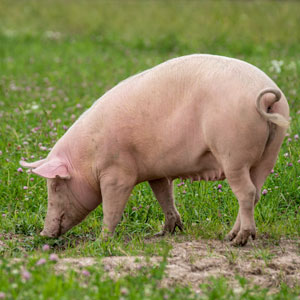
Pigs Bring In A Good Profit
Pigs are smart, social animals who don’t take up a lot of pen space and are fairly easy to take care of. Raising pigs is a good financial decision because selling pork is very lucrative and will make your own meat essentially free while paying you back for the money and work you’ve invested. Wolves, bears, big cats, and even racoons and large birds can attack your pigs, so your herd would benefit from an electric fence, or some noise and/or light devices as well.
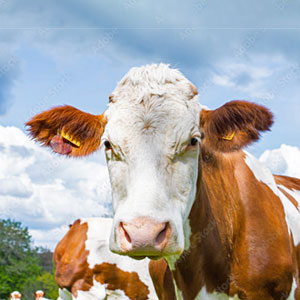
Cows Scare Away Certain Predators
Cows take up a lot of space, and they’re also very pricey. Since investing in cows is a big deal, you’ll want to weigh your options carefully before deciding to try your hand at large livestock. That said, cows will provide a lot of milk (which many people prefer over goat milk), and they’re also worth about 500 lbs of meat each, if you’re wanting variety in your meat production. Another benefit to owning cows is that their very size and presence on your farm will scare away many of the predators that would normally make prey of your poultry and smaller animals.
Is 35 Acres Really Enough Space To Grow Your Own Food?

A homestead layout of 35 acres is a tremendous amount of land, and you’ll have sufficient room to grow your own food. Many homesteaders (myself included) love a simple, healthy, and homegrown approach to food, where they can control the pesticides used on the plants as well as the feed and treatment of the animals they’re benefiting from. Thirty-five acres gives you the space to have this kind of peaceful, healthy, and wholesome farm life.
How Much Food Can You Grow On A 35 Acre Farm?
With the numbers of livestock and gardens we’ve discussed, along the good fortune of a positive growing year of healthy plants and animals and decent weather, a 35 acre farm could produce around 110,000 lbs of food. The numbers below are not supposed to be exact, but they give you a good frame of reference for harvests you can work toward.
Estimated Harvest From A 35 Acre Homestead With This Layout
- 10,500 lbs of vegetables
- 4,500 cartons of chicken eggs
- 4,500 cartons of duck eggs
- 25,000 gallons of goat milk
- 8,000 gallons of cow milk
- 45,000 lbs of fruit
- 3,600 lbs of honey
- 13,000 lbs of meat
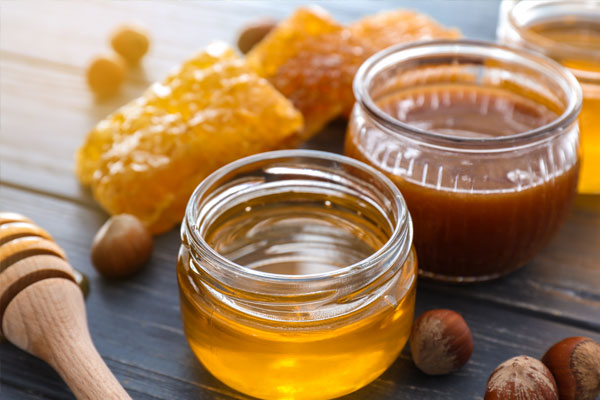
Is 35 Acres Of Land Enough To Be Self-Sufficient?
A 35 acre homestead layout of mostly usable farmland, like the one I’ve pictured, is plenty of land to be entirely self-sufficient, regardless of your household size. You’ll grow enough to eat, trade, and sell to completely cover your costs and even make an income besides.
Can 35 Acres Of Land Sustain One Person?
Thirty-five acres of land can absolutely sustain one person, but working alone, that person would have a hard time farming this entire plot to capacity. If you’re entering into this homesteading venture on your own, you could choose to farm only the amount of land you can sustain, or bring in hired help or locals who would like to help out in exchange for farm fresh food.
Is 35 Acres Of Land Enough To Feed A Family Of Four?
A family of four could eat well off of the harvests a 35 acre homestead design like this one could provide. Whether you only want to grow enough to feed your household and cover your yearly costs, or you’d like to create a profitable farm on your land — it’s all completely up to you.
Can You Be Off Grid On A 35 Acre Homestead?

Living off the grid has become more and more popular in recent years, and if this lifestyle is part of your goals, you’ll be able to achieve it on a 35 acre homestead. If you’re not familiar with this term, living off grid essentially means going as fully self-sustainable as possible — creating your own heating, cooling, waste, power, and food sources.
Is 35 Acres Of Land Enough For An Off-Grid Homestead?
A 35 acre homestead layout will provide plenty of land for all the necessities of an off-grid life. Many off gridders keep their homes on the small side, build an outdoor bathroom and shower with a composting toilet, use solar panels and a solar generator for power, and have their own source of water with a water heater.
How Many Solar Panels Needed To Power Your Homestead?
The 60 solar panels I’ve allowed room for in this homestead layout for 35 acres should be enough to power approximately 6,000 square feet of indoor space. If you’re following my example of a tiny home, you definitely won’t need that many solar panels, but you’ll also want to factor in the different outbuildings you want to power, and any light or sound systems you’re using for the protection of your crops and livestock.
Is A 35 Acre Homestead Worth The Investment?

A large homestead like this blueprint will require a significant investment of time, money, energy, and other resources, but I believe its benefits are worth everything you put in. If you use the proper safeguards to keep your gardens, trees, and livestock healthy and happy, you’ll have bountiful harvests that will provide your household with healthier food options and could also bring in a large profit if you market your produce to local businesses. Local, organic honey, meat, fruit, and vegetables not only sell well, but they also benefit your community by adding fresh foods grown close to home.
How Much Does It Cost To Start A 35 Acre Homestead?
I can’t give you anything near an exact number on the cost of a 35 acre homestead layout because prices of land, materials, and labor are in constant flux. That said, you’ll want to start out strong, so keep these cost factors in mind as you begin.
Costs Involved In Building A 35 Acre Homestead
- Land
- Building materials
- Possible hired help
- Tools and equipment
- Seeds, plants, bushes, and trees
- Livestock
- Continued maintenance
- Animal feed and care
- Lawn care maintenance and gear
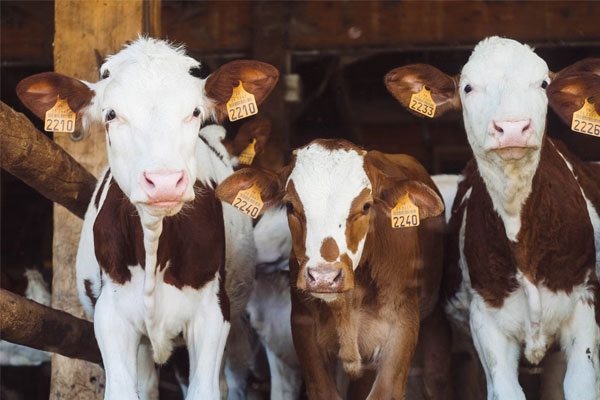
Can A 35 Acre Homestead Be Profitable?
If you’re willing and able to farm most of your property and market your produce, a 35 acre homestead layout can absolutely be profitable. Like anything else in life, your homestead will be what you make of it. With the proper planning, protection, work, and care, your homestead can become just about anything you want it to be, and you can be a self-sustained, successful homesteader.
Your Turn!
- What fencing materials have you chosen to keep predators away from your homestead?
- What natural methods have you discovered for keeping bugs, weeds, and wildlife away?
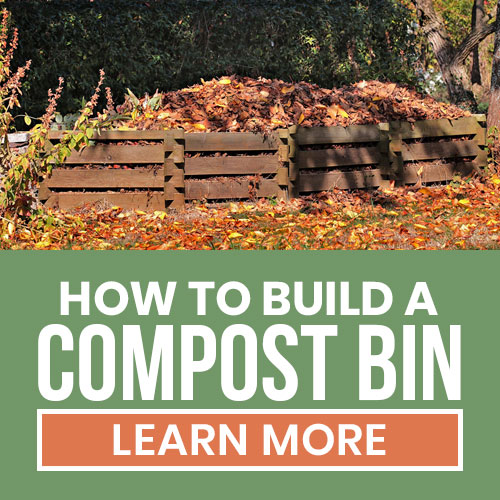








Leave a Reply